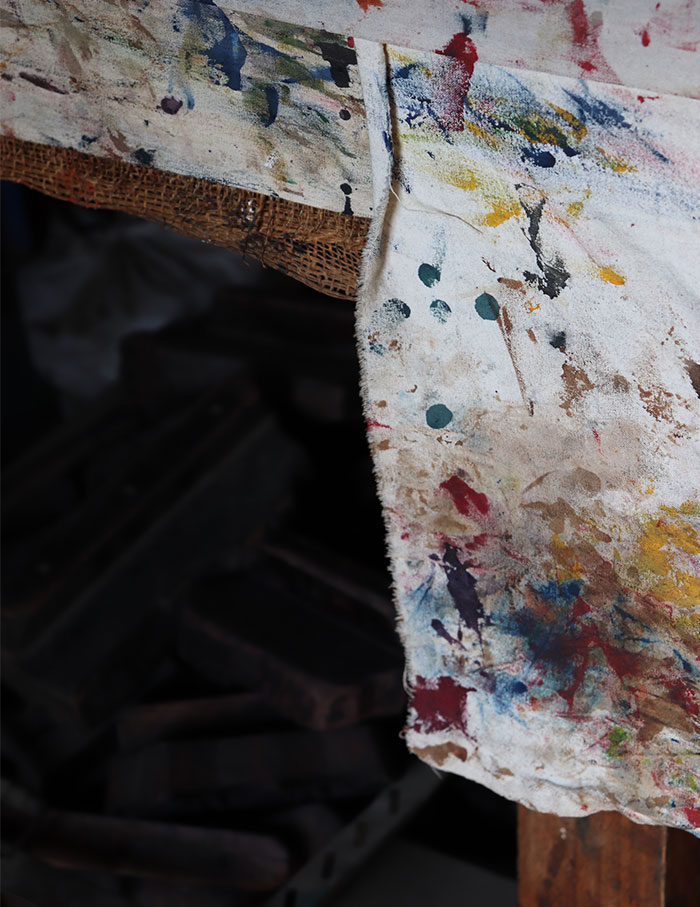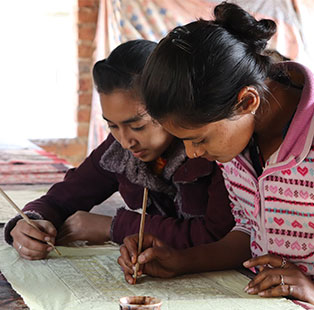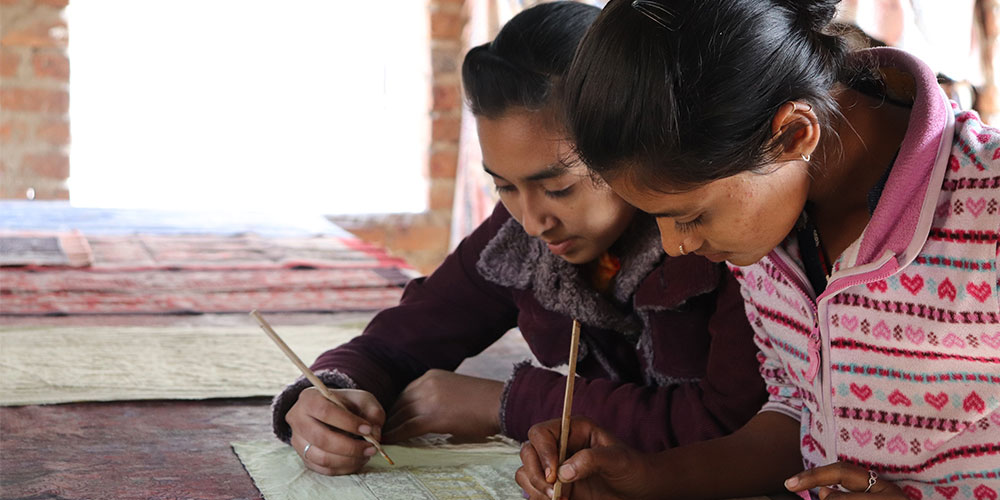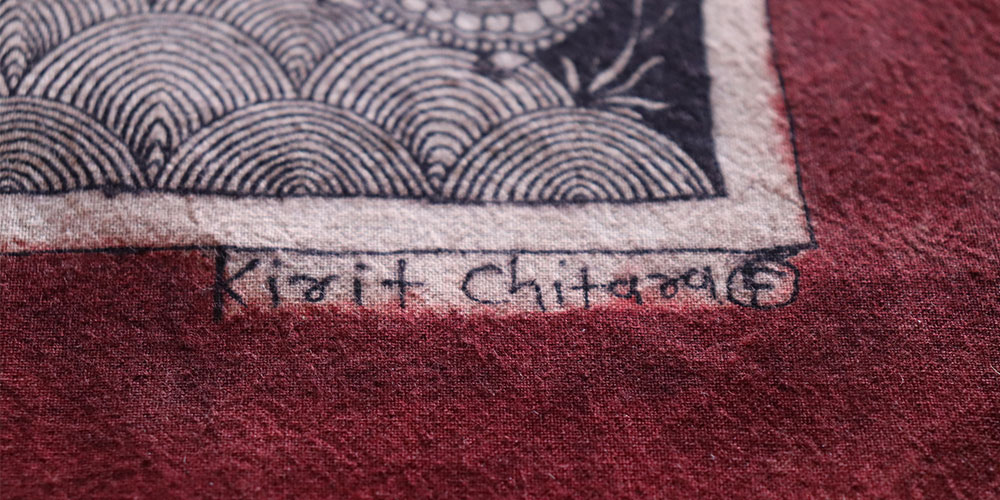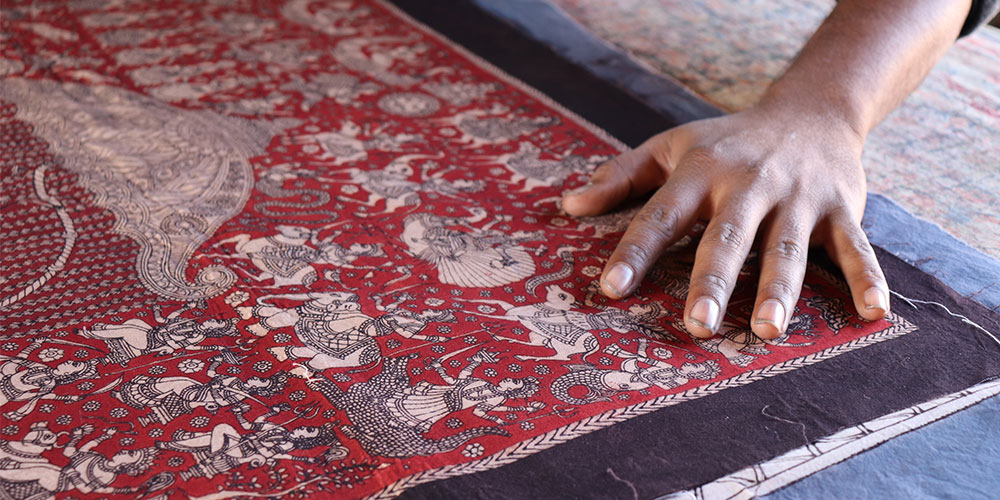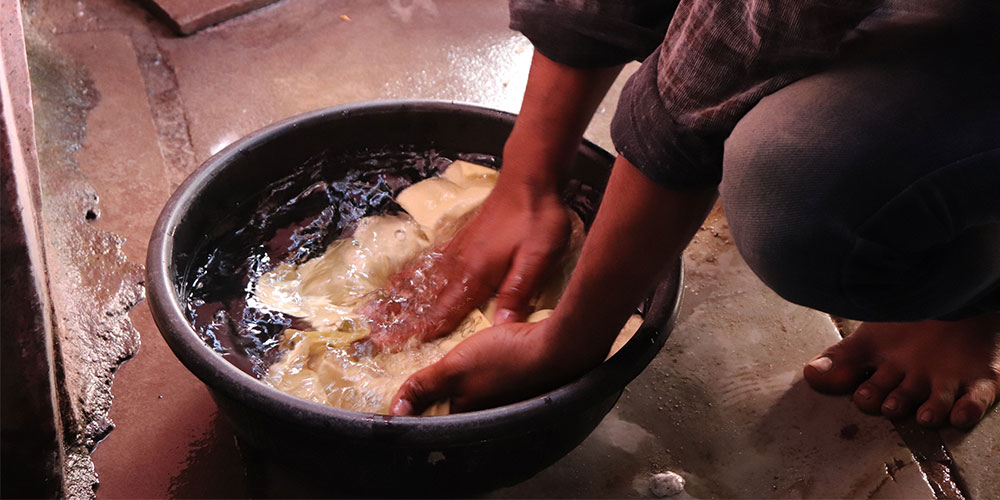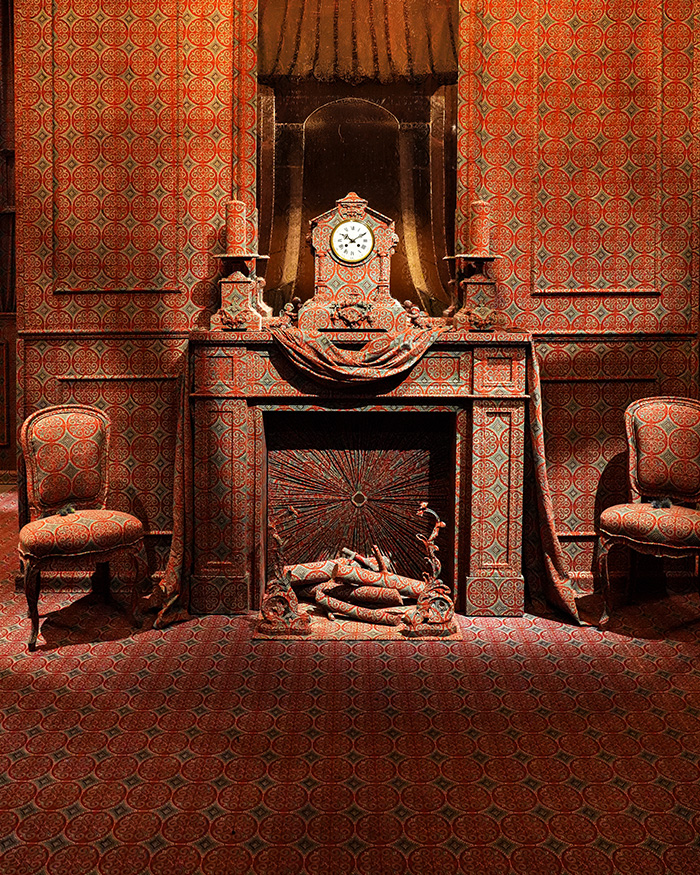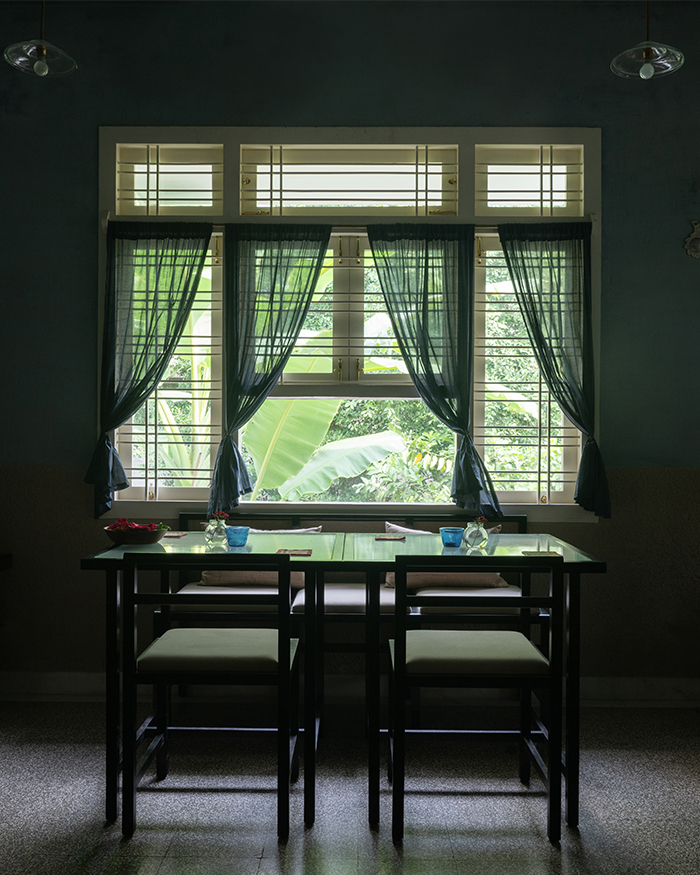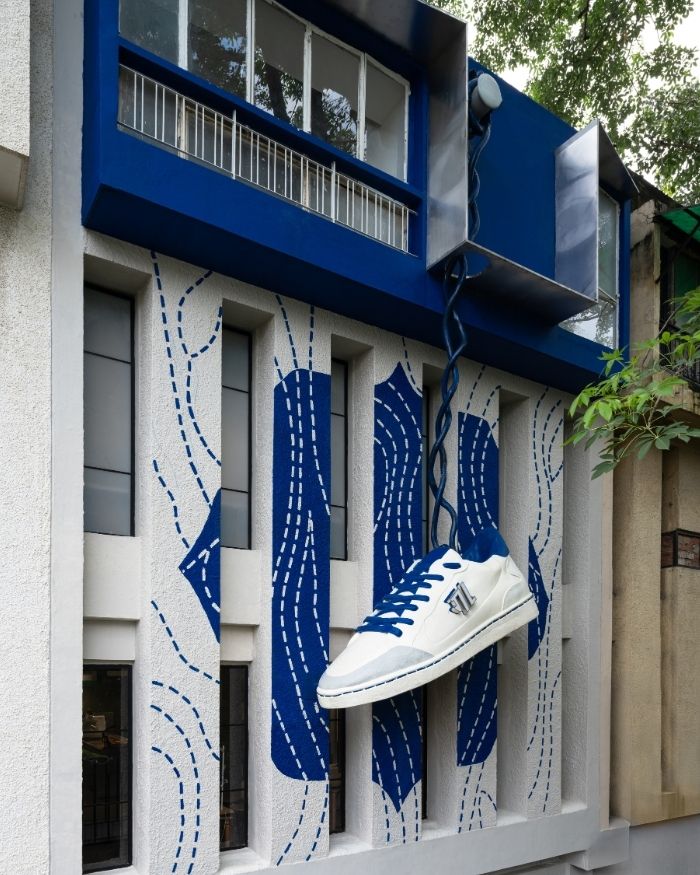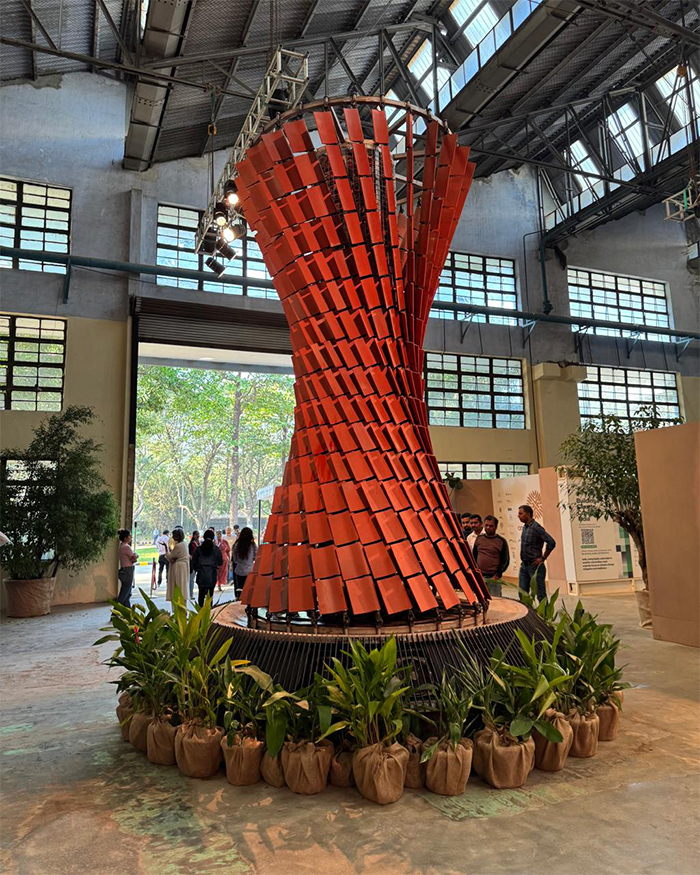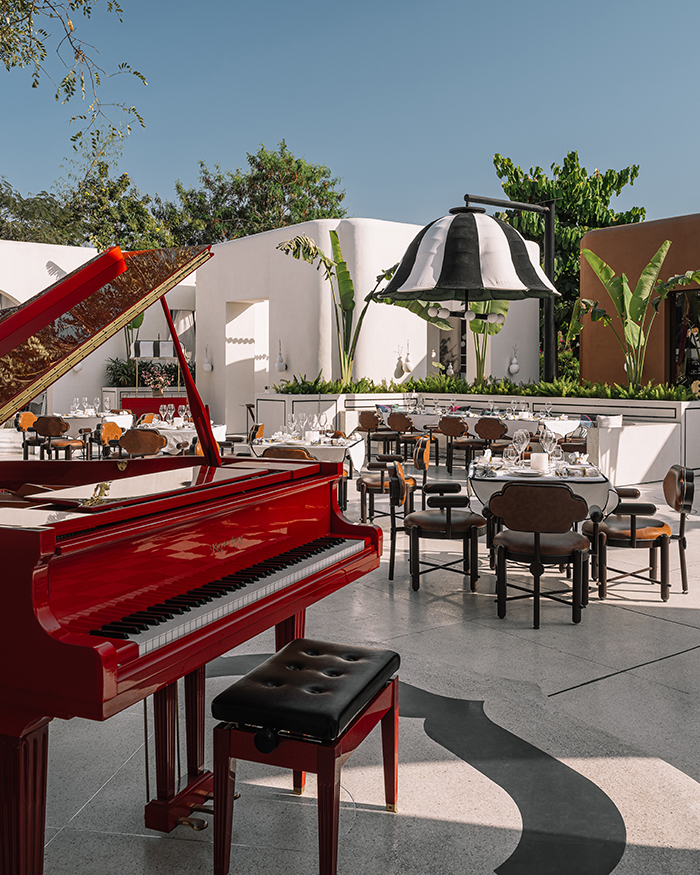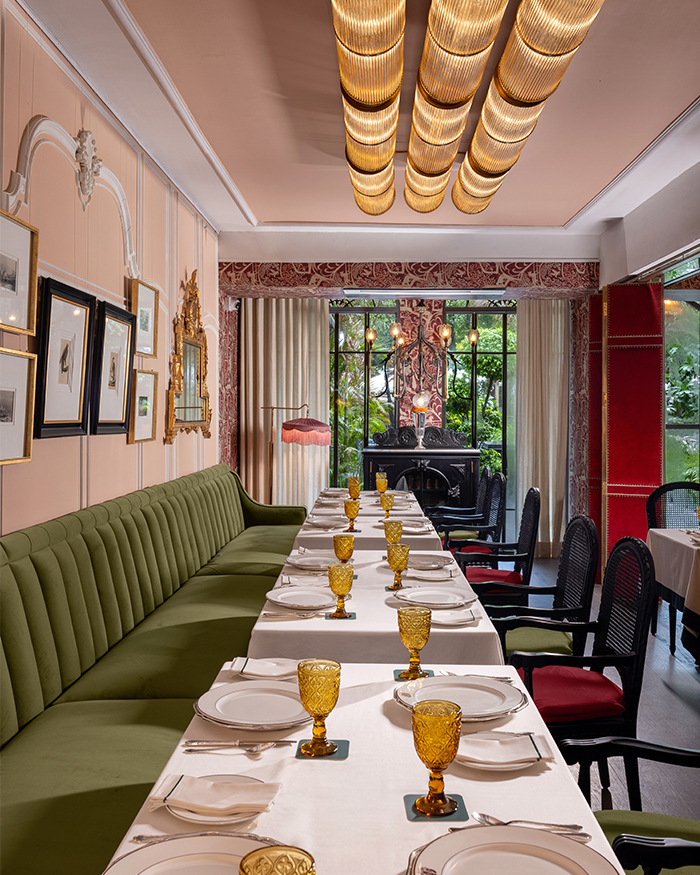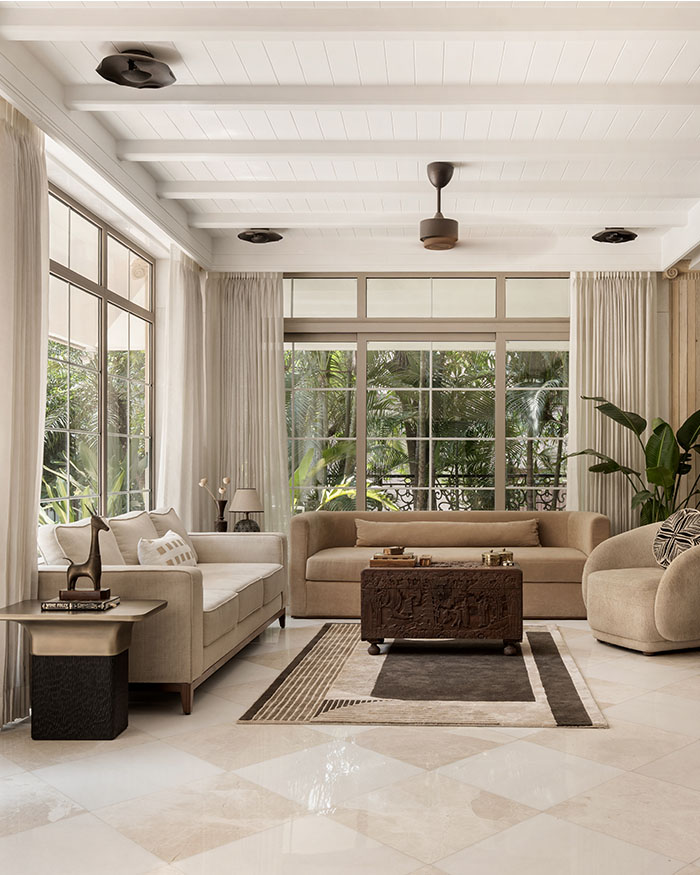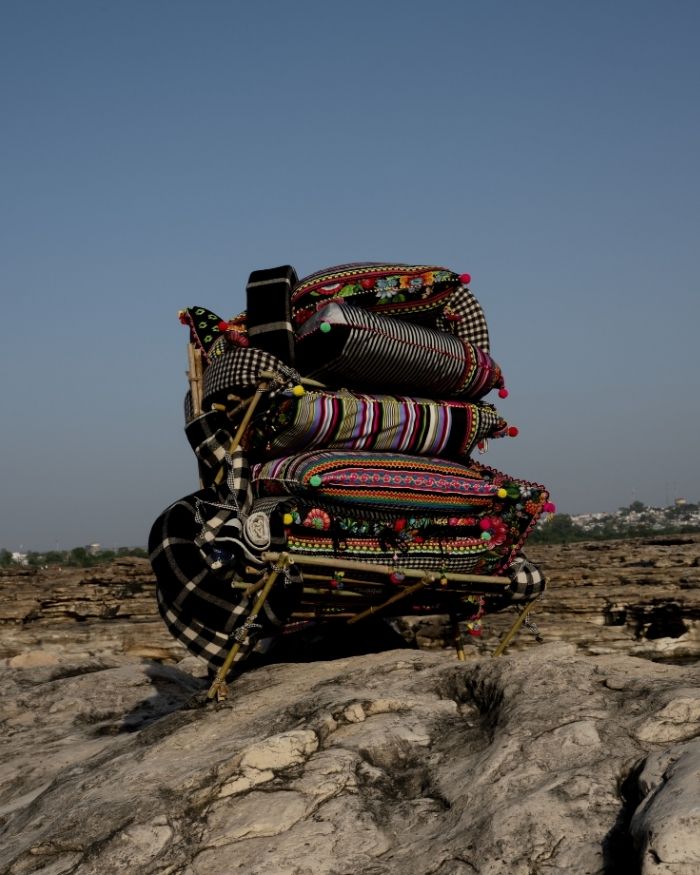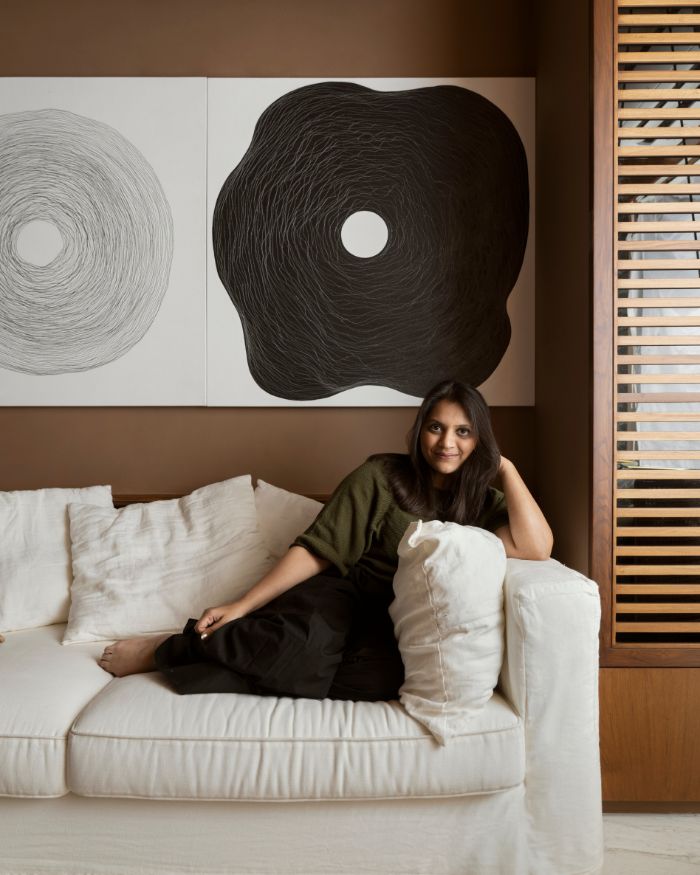Just 10 minutes from the heart of Ahmedabad, Kiritbhai resides in a humble village that’s preserving the 800 year old Mata ni Pachedi, the craft popularly known as Kalamkari. The artform first emerged when the Vaghri hunter community—excluded from the social system and prevented from entering temples—began painting the goddesses on a sacred cloth and hung it behind temples to worship. Through these hand painted drawings, the commune explored narratives from Hindu mythology and Indian folklore.
Kiritbhai belongs to the ninth generation of the artisanal family Chitara from the Vaghri community. His family of 20 artists draw daily, creating works that are commissioned by private collectors, galleries and even, craft organisations. Some of these pieces take weeks and months to complete and may not always fetch a fair price after production. Kiritbhai explains that the demand of the fast paced market has seduced many artists away from hand painting and natural dyes. Several opt for chemical colours and pre-carved blocks to make similar drawings. Yet despite competition from these cheaper and more convenient adaptations, Kiritbhai’s family chooses to remain loyal to traditional ways.
The family’s alfresco workshop features symbols of faith on pink choona walls. Layers of white fabric are laid on a bed to be painted on. Natural dyes of mustards and reds against brick walls lend this space warmth. The artworks that lay around are mesmerising and one particular piece stands out—a wedding scene of dieties Shiva and Parvati, which uses indigo in an ocean of reds and blacks. Kiritbhai explains that the vibrant red and black are quintessential to Mata ni Pachedi.

